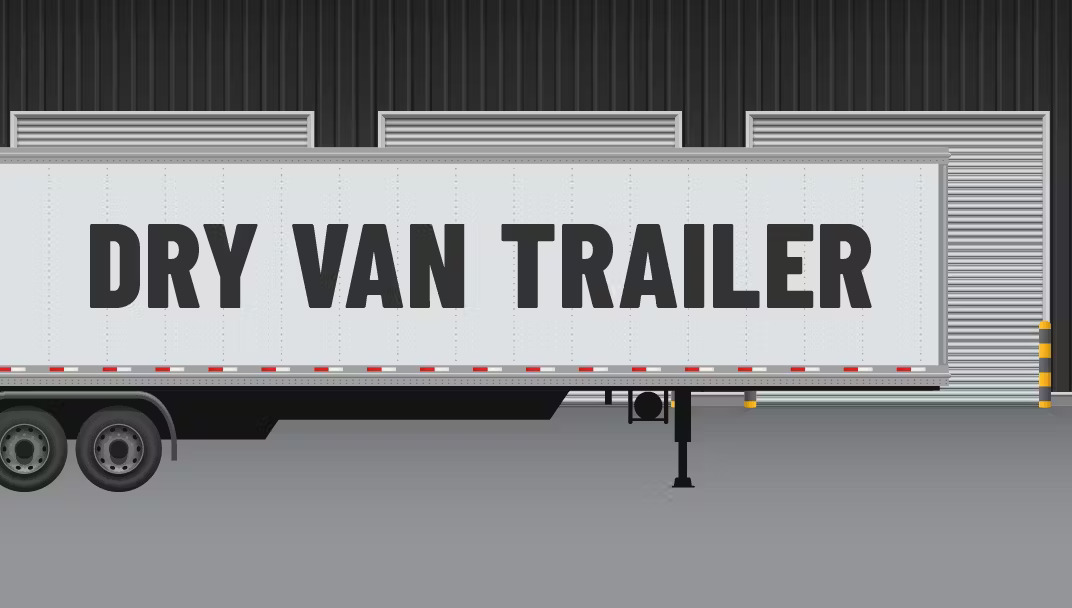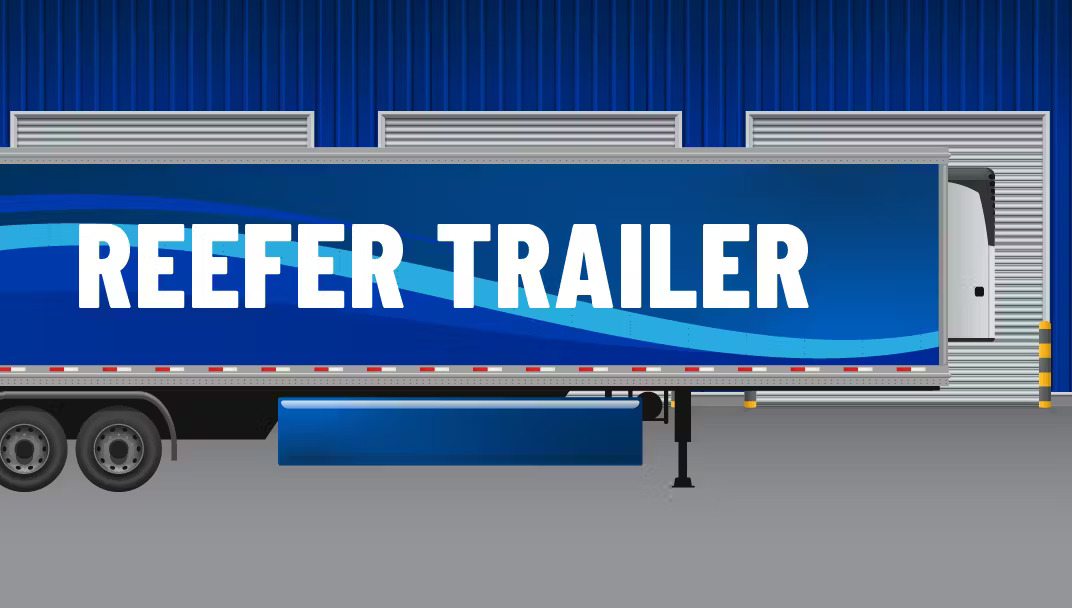Whether you should use a dry van or a reefer trailer depends on identifying the shipping options that best match your transportation needs. Before you successfully move freight, become acquainted with all freight shipping modes and the associated requirements. You can choose from a range of trailer options, including dry van and reefer (refrigerated).
Think of the lanes you work in and the material you transport. Each mode of transportation has its own set of benefits and drawbacks that affect both shippers and carriers hauling freight. Let’s look at the dry van trailer and the reefer trailer in a side-by-side comparison to give you a better idea of their uses and how these seemingly identical trailers actually differ
What is a Dry Van?

Because of its versatility, the dry van tends to be the standard trailer in the transportation industry. It has an enclosed box ranging from 48 feet to 53 feet long. Depending on the truck, you’ll have features like an aerodynamic skirt, loading ramps that can accommodate almost any loading dock, insulation, and an e-tracking system.
For a full breakdown of this type of transportation, check out our resource here for everything you need to know about a dry van.
What are Dry Vans Used For?
“What is a dry van used for?” is a question that needs to be explained. It starts with the knowledge that it can transfer just about any dry, non-perishable item that fits inside. Dry van loads are generally non-perishable and dry goods such as clothing, furniture, non-perishable food, and other commodities that are often transported via pallets. With its weight capacity range being between 42,000-45,000 pounds, shipping loads are quite simple and offer versatility from food and beverage to agricultural equipment.
What is a Reefer Trailer?

A reefer, often known as a refrigerated trailer, is essentially a dry van equipped with insulation and refrigeration. Reefer vs dry van dimensions are usually the same. At a length of 48 to 55 feet, they are meant to transport many LTL goods in a single run.
The most common reefer trailers are 48 feet and 53 feet in length with a maximum weight capacity of 42,500 pounds. A fresh air flow valve, temperature recorder, step-up power transformer, controller display/keypad, and heater access panel are among the other components of a reefer unit. This allows this trailer type to transport any perishable products that must be in a temperature-controlled ambiance in transit.
What is a Reefer Truck Used For?
Reefers are specially built to cater to shippers transporting perishable and temperature-sensitive goods like fresh produce, medications, and chemicals.
A reefer must be pre-cooled prior to transportation to guarantee that the items arrive in good condition. Different sections of the trailer can be set to different temperatures thanks to reefers. Throughout the journey, diesel engines give power to the refrigeration system. It’s crucial to remember that reefers aren’t designed to chill or warm the goods. Instead, they’re designed to keep reefer trailer loads at a certain temperature.
The Benefits and Drawback of Dry Van Shipping
Dry van shipment is used by almost every industry that manufactures or ships non-perishable goods. Let’s take a look at some benefits and downsides of dry van shipping:
Benefits:
- Versatility: The dry van trailer is incredibly adaptable, allowing it to transport a wide range of cargo. This method can be used to distribute building supplies, medical equipment, and other items.
- Security: A dry van trailer’s enclosed design gives the shipper and driver more confidence in the freight’s security. It is shielded from the elements, such as extreme weather and theft, and can be braced for more security.
- Drop and Hook Mode: You can save time and effort by using the “drop and hook” load technique. You can focus on more critical needs because you spend less time manually loading and unloading the shipment.
Drawbacks:
- No Climate Control: Unlike reefer trailers, dry vans are not temperature controlled.
- Easily Damaged: Most dry van trailers are prone to water damage, necessitating the repair or replacement of the rotted flooring. Because most trailers have hardwood floors, moisture from freight or open doors is a persistent threat.
- Capacity: Wide loads or large goods, such as flatbed trailers, are not supported by dry vans. This is yet another limitation of the freight choice, forcing a shipper to look for another means and maybe increase their budget.
The Benefits and Drawbacks of Reefer Trailers
Almost every industry that creates or ships non-perishable items will be found a part of average reefer trailer loads. Let’s look at some of the benefits and downsides of reefer trailers:
Benefits:
- Climate Controlled: Reefers offer many of the same benefits as dry vans, with the added benefit of being able to transport perishable commodities that require heating or cooling.
- Ability to Transport Temperature-Sensitive Items: Refrigerated trailers aren’t only for transporting perishable products. It is also possible to transport dry items or temperature-sensitive freight in reefers. Since there will always be a demand for fresh products, refrigerated transportation will be needed to carry these items.
- High Demand: Because there will always be a demand for fresh products, refrigerated transportation will be needed to carry these items. This method of shipping allows you to send your items across the country safely and easily.
Drawbacks:
- Unavoidable Damage: Reefer malfunctions, on the other hand, can spoil the goods, and the refrigeration unit’s excess fuel usage adds to the operational costs.
- High Maintenace Cleaning: The driver’s extra responsibilities include cleaning the trailer after each load and controlling the temperature and cooling equipment, to name a few.
- Lengthy Load/Unload Time: It’s fairly usual to expect lengthy loading and unloading times on shipping platforms.
The Differences in Cost
As we mentioned previously, dry vans are fairly adaptable and can transport a wide range of cargo. The main difference between dry van and reefer is dry vans are more cost-effective for shippers than reefer trucks because there are so many more of them. The cost of operating dry vans varies depending on demand and pricing fluctuations in your industry.
Shippers will pay extra for reefer, so you may charge more for using a refrigerated truck. Running reefer fleets comes with its own set of expenses. Energy is required for cooling units, which means more fuel is consumed; maintenance and cleaning will likely be more costly.
These numbers come from goods transported in these trailers posing a higher risk of liability.
This, combined with the urgency of perishable item shipments and the cost of powering the trailers’ cooling units, escalates the price of their services. As a shipper’s urgency grows and load spacing becomes a need, the expense of finding capacity and the cost to the consumer rises. Remember to think of all of these factors before you schedule with the equipment that will make a successful and profitable delivery.


Good information